Private Samuel Nobes 1886-1960
1st and 2nd Battalion Norfolk Regiment
Amongst the six Nobes’ listed on the Roll of Honour is one Samuel Nobes ,Norfolk Regiment. Until recently very little, other than an article that appeared in the Dereham and Fakenham Times in April 1915, was known about him. However, all that changed whilst reviewing the research for one of the fallen – Joseph Baker.
Samuel Nobes was born on Tuesday 2 February 1886 to James Nobes, an agricultural labourer and his wife Emma Smith who had their new born son baptised at St Andrew’s Church in Guist Church by the vicar John Morris Spurgeon 9 days later.
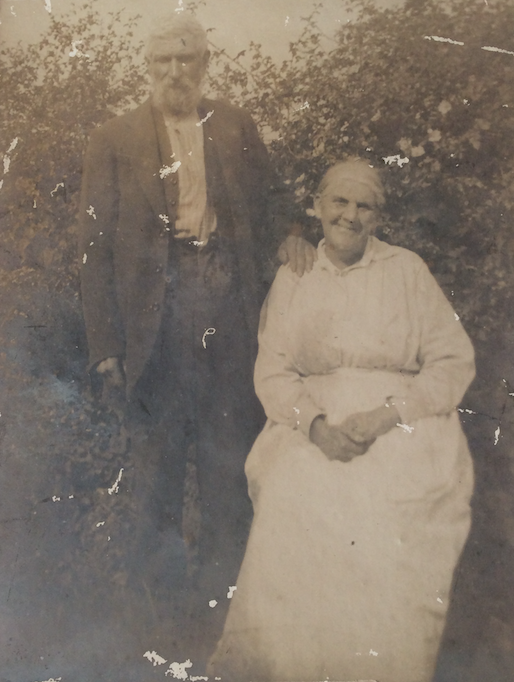
James and Emma Nobes
At the 1891 Census, 6 year-old Samuel was attending school and living with his parents, half-sister Sarah (12) and brothers William (7) and James (3) in Wood Norton. Ten years later and the 1901 Census shows the family had moved from Wood Norton via Stibbard (c1892) to the cottages at May Green near Little Ryburgh where Samuel, now aged 14, was like his father James (43) and brother William (16) working as an ‘Ordinary labourer on a farm’. As well as his parents and elder brother, Samuel was living with brother James (12) and younger sister Edith (6).
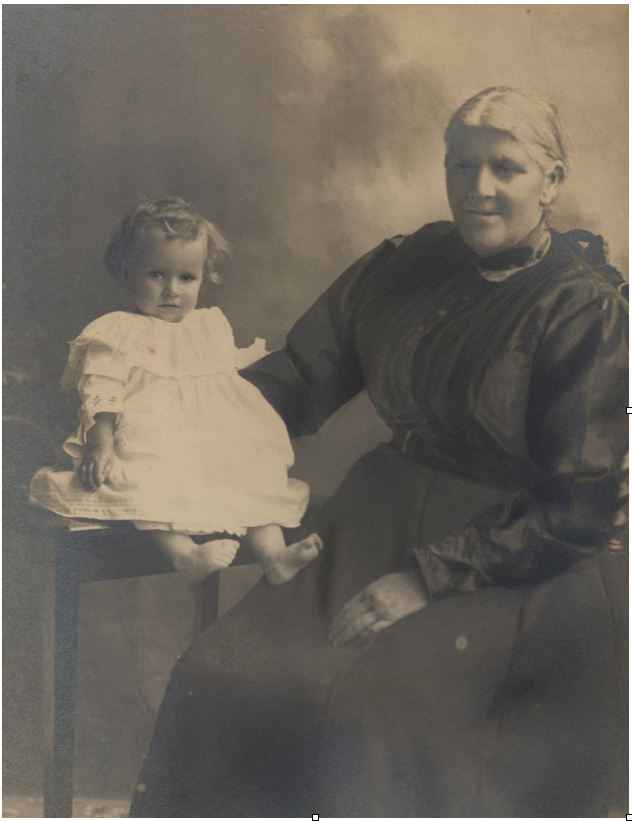
Sam Nobes' mother Emma with his younger sister Edith c 1896
Edith would later go on to marry Joseph Baker.
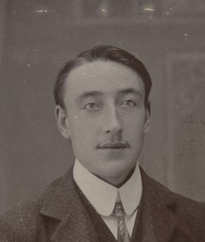
Joseph Thomas Baker
The next record of Samuel’s whereabouts was found in an Enumeration Book for Military Establishments compiled for the Census taken on 2 April 1911 which revealed that a 24-year-old Private Samuel Nobes was serving as a Musician with the 2nd Battalion Norfolk Regiment at Belgaum in India.
When this information was shared with David Turner, a grandchild of Edith Nobes, he provided the following from his own family research.
‘When Edith died I was given two pocket New Testaments and a Family Bible by Susan Baker. The first New Testament printed by Oxford University Press in 1906 is inscribed: ‘Pte S Nobes’ and the handwritten messages in ink are: ‘Pte. S Nobes Bloemfontein 24 February 1907’. This was Granny Peel’s brother, Private Sam Nobes.
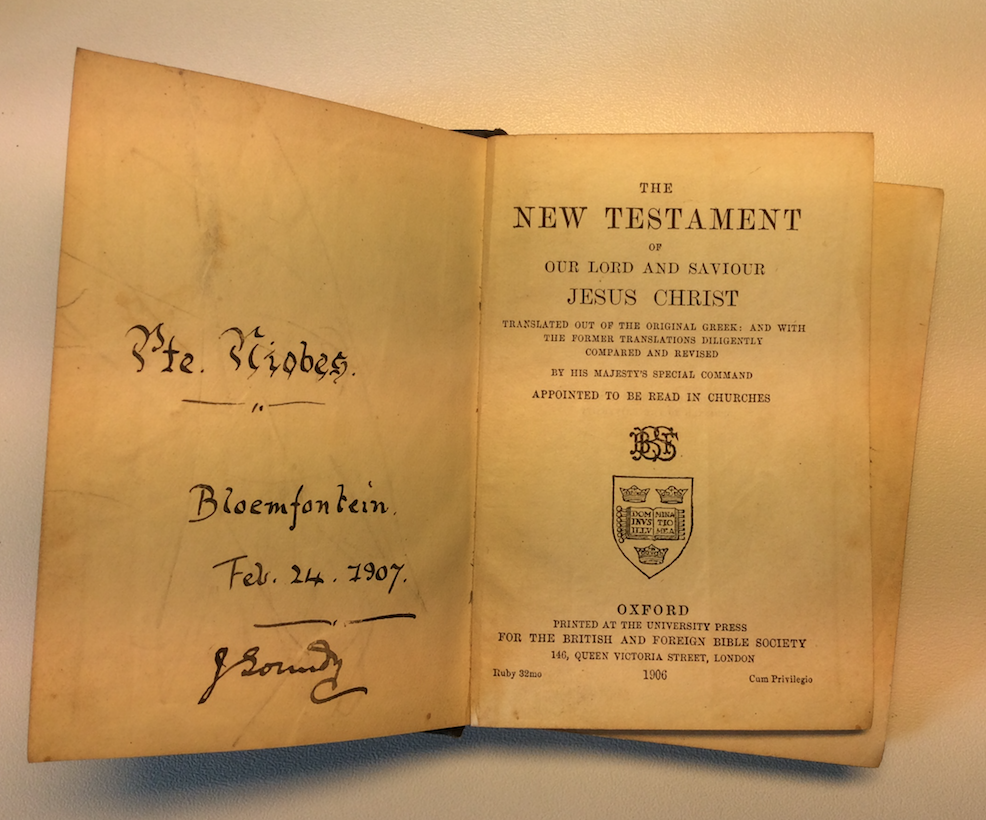
Inside the front cover on the black paper lining is written in pencil: No. 7127 from Pte S Nobes 6th Mounted Infantry Standerton, Transvaal South Africa, to his beloved sweetheart who is Miss Howard 14 Lichfield Road, Gt Yarmouth Norfolk England.
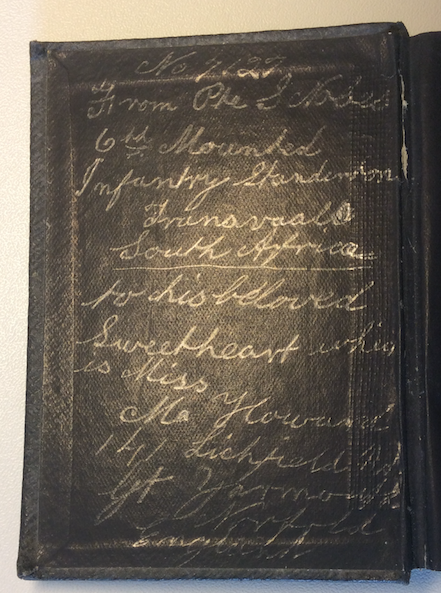
Inside the back cover on the black paper lining is written in pencil: ‘’Bloemfontein, Pietermaritzburg’’ and ‘’you will be waiting for my photo but my love I will send you one as soon as I can have them taken. I am sending you this with much love. God is Love.
Pte S Nobes, H Coy 2nd Norfolk Bloemfontein Pietermaritzburg’’.
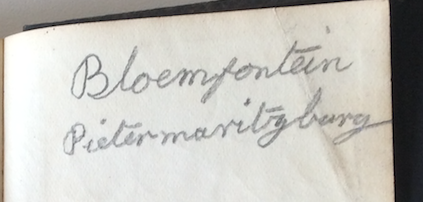
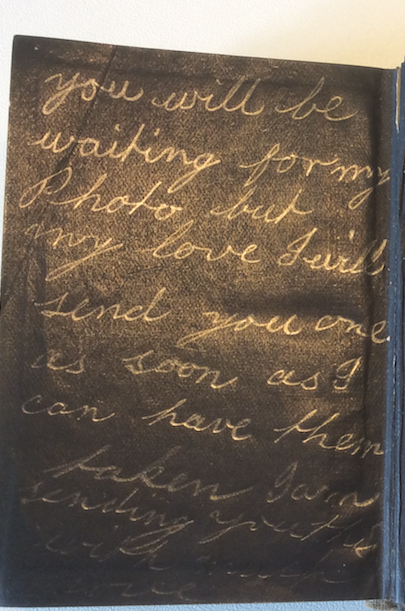
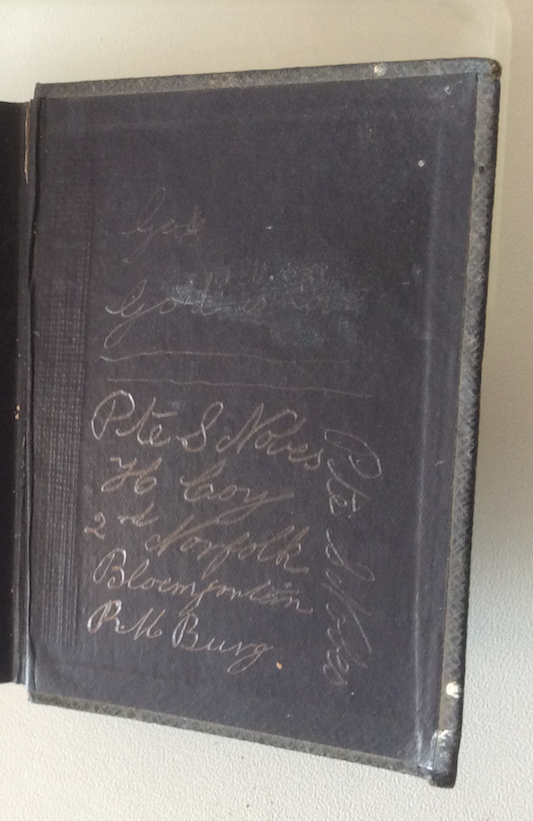
The Anglo Boer Wars for Independence in South Africa were 1899 – 1902 and these resulted in a British victory but with heavy loss of life. Private Samuel Nobes must have been in South Africa after the two wars of independence, possibly working to support the peace treaty of 1902.’
This important family history archive crucially revealed two things: Samuel’s service number and the name of his sweetheart. With Samuel’s service number we were able to discover a little more about his time with the Norfolk Regiment.
Private Nobes’ service number 7217 was issued about 1905, which would suggest that Sam was aged 19 when he enlisted with the Norfolks. From there, we were able to discover from his Medal Card that he entered the ‘Theatre of War’ as an ‘Old Contemptible’ on the 22 August 1914 for which he was later awarded the 1914 Star with clasp and two silver roses.
The 1914 Star was authorised in November 1917 for award to officers and men of the British and Indian Expeditionary Forces who served in France or Belgium between 5 August and midnight 22-23 November 1914. The majority of recipients were serving in the pre-war British Army, who’d landed in France soon after the outbreak of the War and took part in the Retreat from Mons (August-September 1914), which gave the medal its nickname ‘Mons Star’.
As mentioned above, the Dereham and Fakenham Times carried on its front page of 24 April 1915, an article about those from Ryburgh serving in The Great War. About Samuel it said
‘Private S. Nobes. 1st Norfolks, was in at Mons and survived the retreat until at La Basee a shrapnel burst over him, cutting him up badly in the legs. He returned home very much a cripple, but is progressing slowly at Felixstowe.’
This vivid yet brief description of what Samuel and his fellow soldiers faced, perhaps give a little insight into why a clasp was instituted in 1919. The clasp, together with two small silver roses, was awarded to those who had served under fire or who had operated within range of enemy mobile artillery in France or Belgium between 5 August and 22 November 1914. No-one reading the brief account above will be surprised to discover that Samuel was awarded his clasp and roses on 3 March 1922, presumably after applying for them.
Sam served with the 1st Norfolks throughout WW1 and thanks to Norfolk based author & military researcher Steve Smith we’ve discovered a little more about Sam’s injuries via the Norfolk Regiment casualty list. It would appear that Private Nobes’ wound mentioned in the Dereham and Fakenham Times occurred right at the end of the Norfolks participation in the defence of Festubert as the Regimental casualty list shows Sam returning to England with a shell wound to his leg on 11 November 1914. He was initially treated at 2 Western General Hospital, Manchester from 15 November before recuperating at Felixtowe. Sam’s wounds were not sufficient to see him discharged and in the absence of his service record, we are not able to identify specifically when he returned to the front but Sam was back in France by the summer of 1915 and was wounded again as the casualty list shows:
12 Jul 1915 not yet diagnosed severe Rouen 5 General Hospital (France/Belgium)
25 June 1917 Haemoptysis mild St Pol 12 Stationary Hospital (France/Belgium)
30 Oct 1918 Whitlow Left Toe Mild Dannes Camiers 22 General Hospital (France/Belgium)
3 Nov 1918 Wounded Cambridge Military Hospital, Aldershot
David Turner’s family archive also includes the second pocket New Testament printed by Cambridge University Press for the Scripture Gift Mission.
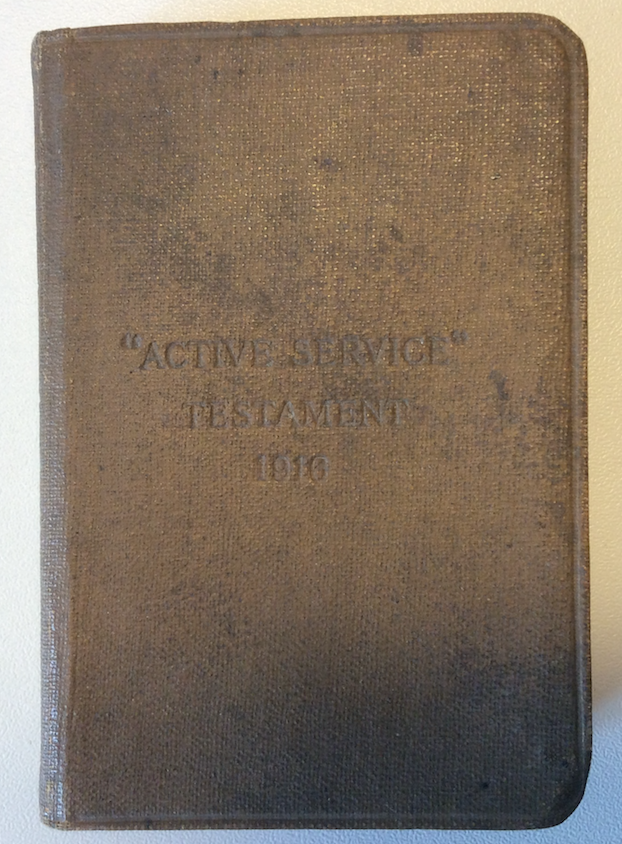
It has ‘’1916’’ impressed on the front cover and on the inside contains ‘Lord Roberts’s Message to the Troops, 25th August 1914’: The printed message states:
‘I ask you to put your trust in God; he will watch over you and strengthen you. You will find in this little book guidance when you are in health, comfort when you are in sickness and strength when you are in adversity. - Signed ‘Roberts’.
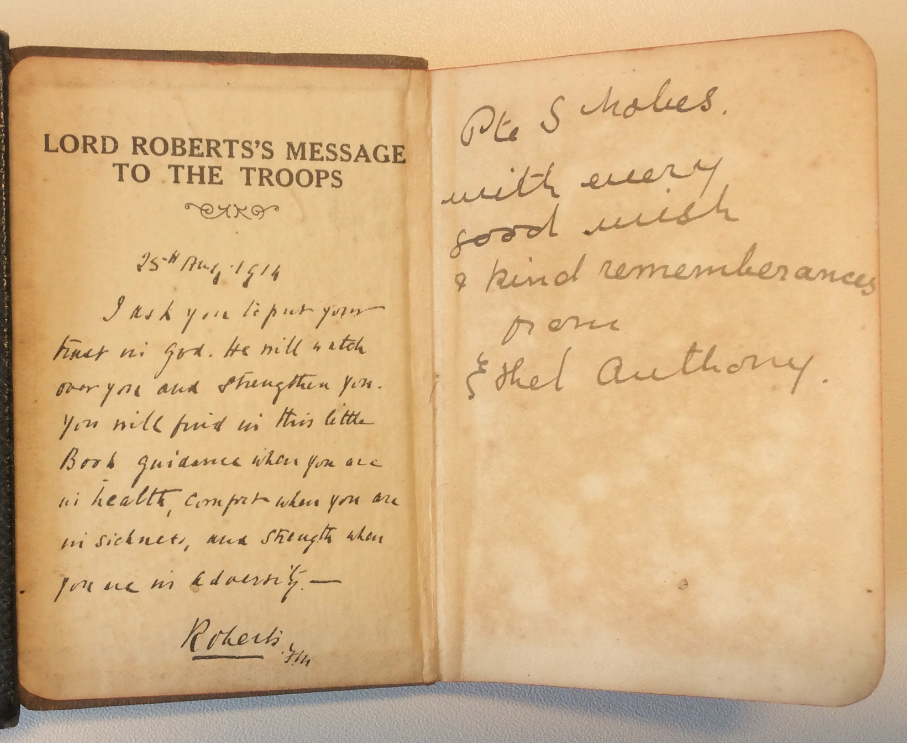
Hand written in ink is ‘’Pte S Nobes, with every good wish and kind remembrances
from Ethel Anthony’’. Folded in the back of this New Testament is a page torn from a Prayer Book dealing with the ‘’Form of Solemnization of Matrimony’’. It is marked in ink where the Man and Woman answer the Minister.
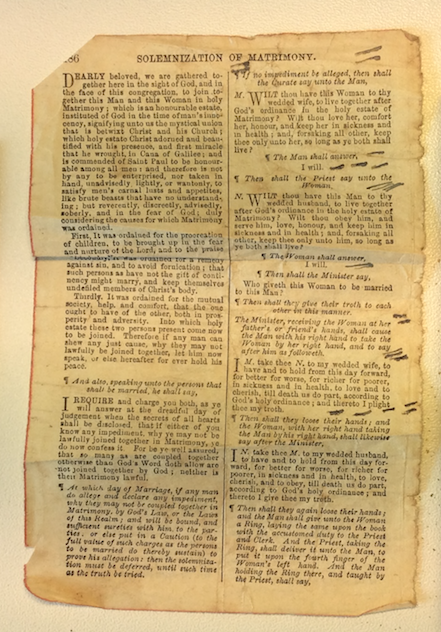
These New Testaments were issues to troops about to go on active service during the 1st World War, 1914 - 1918.
As previously mentioned, David Turner is in possession of a Family Bible which presumably originally belonged to Margaret as it is inscribed inside ‘’Mrs M Nobes and ‘Margaret M Howard 1903’. It would appear that eventually this Bible was given to his nephew James Baker the son of Joseph Baker and Edith Nobes. It is inscribed ‘’With love and best wishes to dear Jim and Daphne and Susan from Aunt Maggie and Uncle Sam Nobes 18th March 1961.
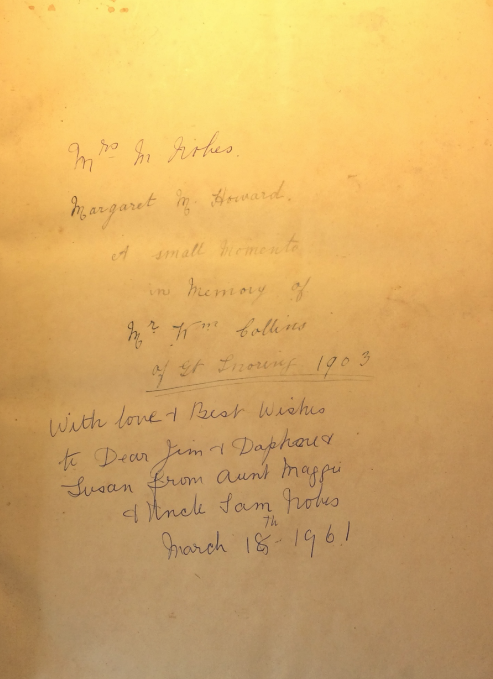
After serving in South Africa, India and the battlefields of Belgium and France, Samuel finally married his sweetheart Margaret Mary in Swaffham.
On the Marriages Page of the Family Bible is written:
‘’Samuel Nobes / Margaret Howard, Swaffham Church, 27th November 1916’’
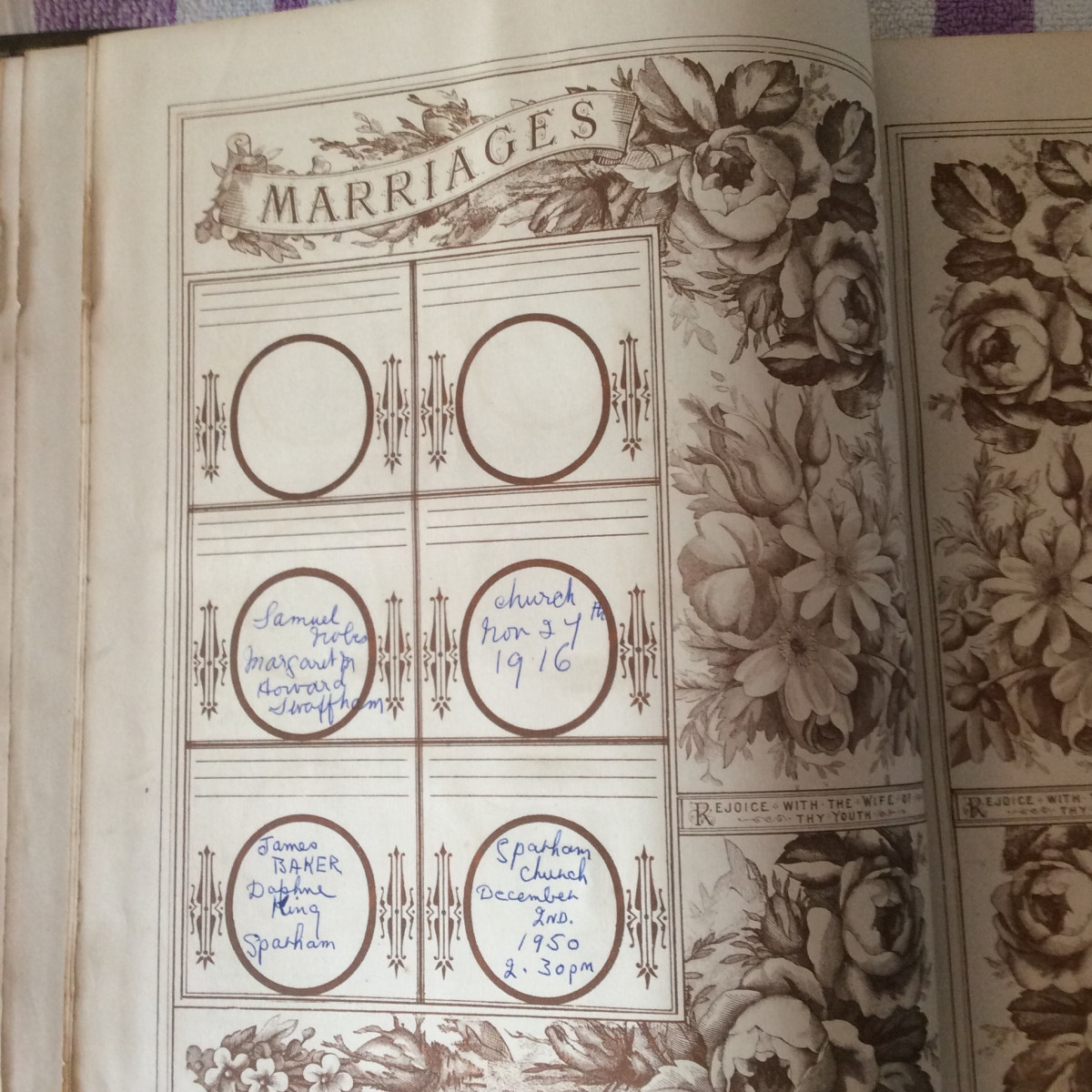
At the end of the War, Private Samuel Nobes returned to Highfield Great Ryburgh to live with his wife Margaret having been discharged about 5 February 1919. How long Samuel and Margaret continued to live in Great Ryburgh is not currently known. Perhaps the 1921 Census when it is released in 2022 will tell us, but we do know that in the lead up to WW2, Mr and Mrs Nobes were living near Roxham Crossways Hillgay with Samuel employed as a Farm Labourer.
It's believed that Samuel and Margaret eventually moved to Masseys Yard, Wells-next-the-Sea. Samuel died 26 November 1960 aged 74 and Margaret on 2 December 1963 at the Cottage Hospital in the town. Both were laid to rest at the Market Lane Cemetery.
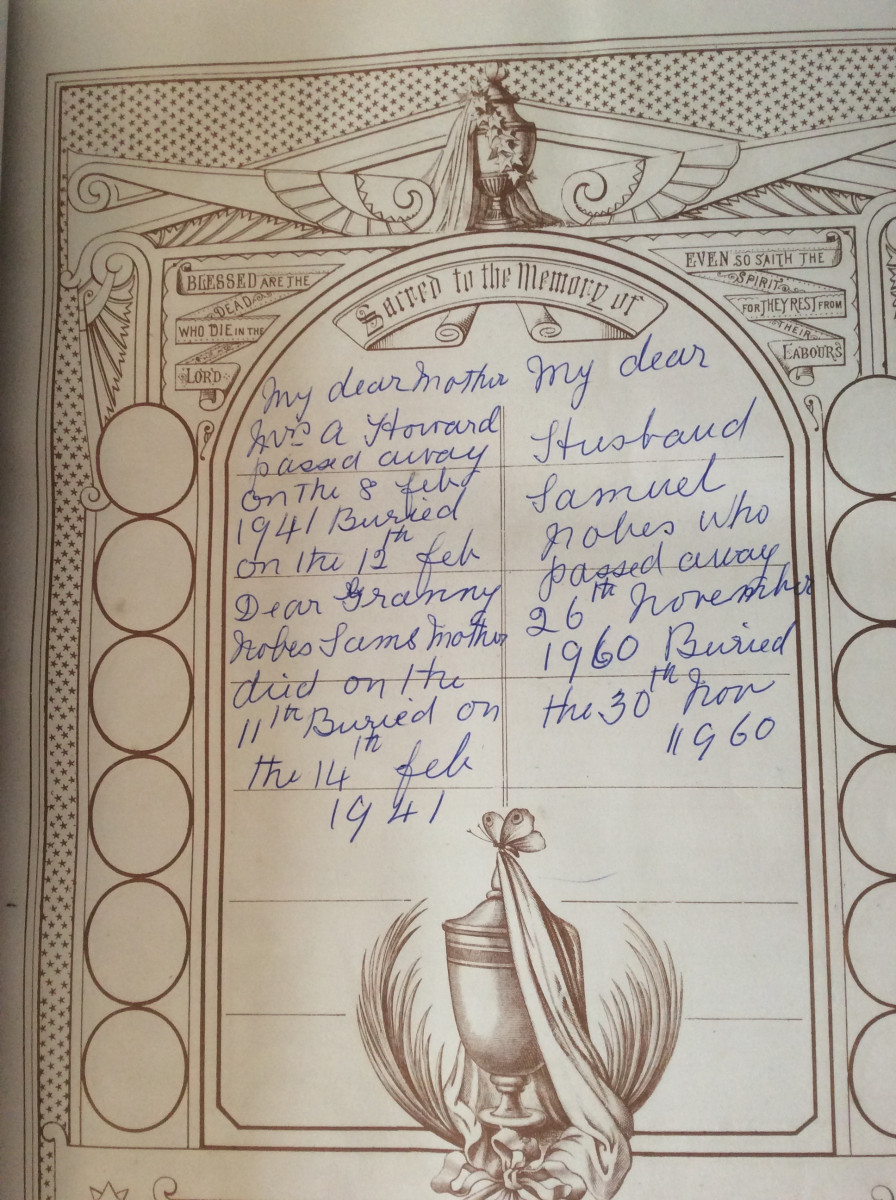
Ryburgh Remembers is extremely grateful to David Turner and Steve Smith in helping to compile this biography in honour of one of Ryburgh’s World War 1 servicemen. If anyone has any further information, knows the whereabouts of Sam’s medals or has a photograph of him, please get in touch.
Copyright Steve Bushby, Ryburgh Remembers 2021